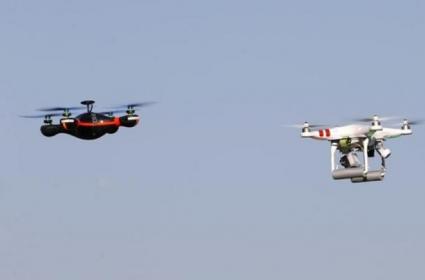US scientists develop thought-controlled drones

Washington: Scientists have discovered how to control multiple robotic drones using the human brain. Using just thought, one can direct the drones. This helps developing swarms of search and rescue drones. All that needed is that just wear a skull cap with electrodes wired to a computer to control drones by human brain.
A controller wears a skull cap outfitted with 128 electrodes wired to a computer. The device records electrical brain activity. If the controller moves a hand or thinks of something, certain areas light up. “I can see that activity from outside. Our goal is to decode that activity to control variables for the robots,” said Panagiotis Artemiadis, from the Arizona State University in the US.
“If the user is thinking about spreading the droned out, we know what part of the brain controls that thought, A wireless system sends the thought to the robots. We have a motion-capture system that knows where the quads are, and we change their distance,” Artemiadis said.
Up to four small robots, some of which fly, can be controlled with brain interfaces. To make them move, the controller watches on a monitor and thinks and pictures the drones performing various tasks. “During the last two to three decades there has been a lot of research on single brain/machine interface, where you control a single machine,” Artemiadis said.
Up to four small robots, some of which fly, can be controlled with brain interfaces. To make them move, the controller watches on a monitor and thinks and pictures the drones performing various tasks.
A few years ago, he had the idea to go to a lot of machines. It is part of a trend in robotics and space exploration – instead of building one giant expensive machine or plane or spacecraft, researchers build a lot of little cheap ones. Artemiadis worked with US Air Force pilots. The pilots were sceptical. Their main objection was what would happen if they thought of something else while controlling the drones. “If it is close to lunch and all you can think about it is pizza, it doesn’t work. Fatigue and stress also play a part,” Artemiadis said.
The system has to be calibrated to individual controllers, and it has to be done every day, because brain signals change from day to day, he said. The next step in Artemiadis’ research is multiple people controlling multiple robots. In the future, he sees drone swarms performing complex operations, such as search-and-rescue missions.
Source: PTI



















